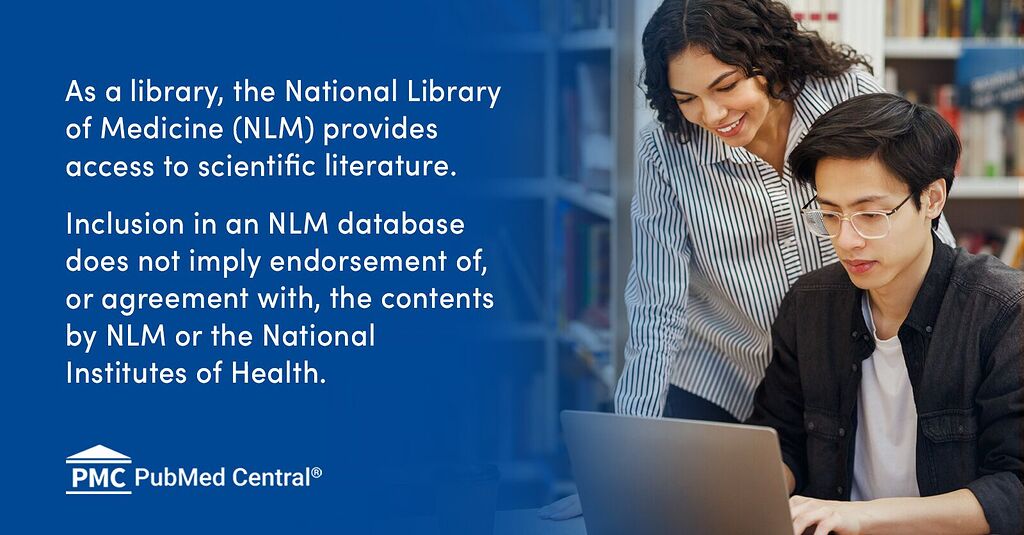1. 読みやすいレスポンスレターを書く
査読コメントに対応するのは中々辛い作業ですが、基本的には順番に対応していきましょう。時には何回も同じことを説明する必要があり、その時には「上記に書いた通り~」と書けますし、査読者も重要な点から順番にコメントを書いていることが多いです。
返事はWordに査読者のコメントを貼り付けて、そこからレスポンスを描くのですが、書き方は人によってバラバラです(査読をしていても実感します)。しかもWordに一生懸命書いても最終的に投稿する時にはweb上にコピー&ペーストしないといけない…という雑誌もあります。従ってフォントやカラーを調整したのに無駄になってしまう事もありますが、できるだけ読みやすいレスポンスレターを書くというのは意識しましょう。これは指導者が指導する際にも、綺麗に読みやすいレスポンスレターだと指導がしやすいからです。
2. ChatGPTなどの活用
レスポンスレターを書くときにもChatGPTがあるおかげでだいぶ楽になりました。その一つとして、「査読者の意図していることがわからない」という事態がかなり減ることにあります。査読者は忙しい中で行うので、一つ一つの質問を丁寧に返してくれるわけではないですし、時には口語体のこともあります。また疫学的表現が難しい場合は理解が困難なこともあるでしょう。
どうしてもわからなければ、その文章のみをChatGPTに「詳しく意図を説明して、レスポンスの一例を示して」と入れれば解答のイメージがつきます(すみません、全文入れるのが倫理的に良いのかは分かりません)。また、自分が書いた文章を「査読コメントへの返事として校正して」とすれば、丁寧な文体になるので、ぜひ利活用してください。
例えば、
1. 自分の論文のアブストラクトをChatGPTに入れる
2. 査読者からのコメントの意図を記載する
3. 自分の返事を入れて、「上記査読コメントに対する返事として英文校正して」
などです。プロンプティングによって解答は変わるので、最後にDeepLに入れて、日本語で意味が通じているか確認しましょう。ある程度は自信を持って書けているなら良いですが、そうではない時は必ずGPTとDeepLの両方を使って翻訳→逆翻訳のプロセスを行います。ChatGPTで英文作成、DeepLで翻訳させ、DeepLの訳でもわかりやすく書けていれば間違いは少ないでしょう。
3. レスポンスレターの具体例
査読の返事を書く時には再度カバーレターを書きますが、これは下記のような定型文でOKです。
Dear Dr. Rubenfeld,
Thank you for your ongoing consideration of our manuscript for publication in JAMA Network Open. We appreciate the time spent by you and the reviewers and believe the revised manuscript is improved. Below, we have addressed your and the reviewers’ comments.
We look forward to your editorial decision.
Sincerely,
Tadahiro Goto, MD, MPH
Department of Emergency Medicine, Massachusetts General Hospital (on behalf of all the authors)
そして編集者・査読者からのコメントを貼り付けて、コメントを書くのですが、筆者らは査読コメントを太字、自分たちのレスポンスを通常の字体で書いています。またどこからがレスポンスか分かるように文頭に[Response]と書いています。これがあると、Wordで提出でなく、雑誌のウェブサイトにコピー&ペーストしなければいけない時にもどこからがレスポンスか分かりやすくなります。他にも四角枠でコメント部分を囲うなど色々な方法がありますが、読みやすければなんでも大丈夫です。
EDITOR’S SPECIFIC COMMENTS:
1. This manuscript received mixed reviews. In general, methodologically it seemed sound to the reviewers although some issues were raised about providing details of the models. In its current form, however, reviewers struggled to understand the importance of this paper outside of making a modelling point, that is, that in your hands the “AI” models beat out your reference model “using the conventional triage classification information”. I note that there is no standard (say stepwise selected) logistic regression using all of the available variables, though, again I am not sure if this is a research question.
[Response]
We appreciate your comments and the opportunity to clarify this important point. The reference model was selected for several clinical and statistical reasons. For clinicians, in the current ED settings in the U.S., the most commonly used triage approach is the 5-level Emergency Severity Index (ESI). Additionally, in the current triage settings with limited resource and time pressure, it is not feasible for ED providers to use all information available (without the use of automated machine learning approaches). In this context, we have developed the research objective – to compare the performance of machine learning models with that of conventional approach – i.e., the models fitting only the 5-level information (the reference model). As suggested, we have clarified this point in the Introduction section (page 5, para 2 and page 6, para 1) as follows: “***”
レスポンスのコツとしては、
- 諸説ありますが、レスポンスレターの主な回答先は査読者ではなくて編集者と筆者は教わりました。
従って編集者へのコメントは”you”を使い(”we thank you”など)、査読者へのコメントには”the reviewer”で返す(”we thank the reviewer”)などを用います。最近の論文ではyouを使った方が良いとあったので、どちらでも良いです。これが影響することはまずないでしょう。 - “We thank the reviewer for the positive comment”など、最初に一言お礼の言葉を入れる(くどくなり過ぎない程度に。ちなみにこのような一文を入れるかどうかは賛否両論ですが、自分が査読している時に全くお礼コメントないとちょっとだけ「ぶっきらぼうだなあ…」と思うことはあります)。
- 査読者として一番嫌なレスポンスが「ご指摘通り変更しました」の一文だけ、みたいなやつです。これは非常に印象が悪いです。査読者からすると、何をどう変更したのか分からないし、本文を探さないといけないしで極めて悪印象です。
- 「あなたの言う通り、私たちも***という点は確かに問題だと思います」のような文章を入れない。日本人はやりがちですが、ただ査読者のコメントをおうむ返ししているだけで冗長です。ズバッと回答から入りましょう。
- First, second,…とポイント抑えて書く
- 本文のどこを変えたかを明記する。この時行番号を書いてもいいのですが、時々この数字がずれるのでpage & paragraph番号で書く方が無難な気はします。セクションの部分とpage, paragraphを太字にすると見易いです。
- 最後に変更点を記載する。査読者としては正直、変更点をいちいち本文を読んで確認するのが辛いので、レスポンスレターだけを読んで判断できるならそちらの方が労力が少ないからです。
4. 困った査読者への対応
論文をしていると困ったコメントや対応の難しい査読者に当たることは少なくありません。そのような中でも誠実な対応を求められるのですがいくつかの場合に分けてみました。
- 査読者の意図することが不明な場合。
この場合は、ChatGPTなどで、自分の論文の要旨と指摘箇所を読み込ませた後「この査読者の意図を教えてください」などのプロンプトで意味を汲み取ることが大事です。時には専門用語の理解が難しいことがあるので、「これは専門的内容で正直なんと言っているかわからない」場合は指導者に相談しましょう。この時、対面かzoomの方がいいです。どうしても分からなければ、自分なりの理解で解答し、「If we did not understand the reviewer’s concern correctly, we would be happy to revise the manuscript once more.」のように再度の解答機会を求めるのもありです。 - 明らかに必要のない解析を求められた場合。
これは結構悩ましいのですが、よくあるパターンです。基本的には解析を行い、査読者用のテーブルとして提示します。そして、「While these findings might provide **, our study aim was to *** but not to ***」などのように研究目的と異なるから本文には入れませんでしたと述べます。そして最後に「However, if the editor and the reviewer prefer, we are happy to include these data in the manuscript.」としてeditorの判断に任せるという形にすることで無難にまとめられます。 - 頭から「こんな研究は意味がない」と言われた時。
このような場合は、なぜ研究を行ったのか、そしてなぜこの研究が大事かを要約して説明することが求められます。査読者が勘違いしている場合と、正しく理解した上でそのようなコメントをしている場合はありますが、editorを意識しながら冷静に研究の価値を示すことが大事です。 - 査読者からの困ったコメントに対応するためのサイト
「事後的なサンプルサイズ計算して」とか困ったこと言われたときのディフェンス論文がまとまっているサイトです。どんなものがあるか下記にリストします(下記リストは「OK」の意で記載)。

- RCTでTable 1にP valueを示す必要はない
- RCTで共変量を調整するのはOK
- RCTでアウトカムを「ベースラインからの変化」にするより、ベースライン値の共変量調整を行った「フォローアップ」測定値をアウトカムとして分析する方が良い
- RCTや比較研究で、各群におけるベースラインからの変化を別々に分析するのではなく、対照群と比較する
- ロジスティック回帰では「1変数あたり10イベント」という経験則がよく用いられるが実際はもっと複雑
- 変数選択においてステップワイズは一般的に避けるべき
- 単変量回帰で有意だった変数を多変量回帰に組み込むのも避けるべき
- 「統計的に有意な」結果が得られなかった研究において、post-hoc powerの計算をすることはp値を別の方法で報告することに他ならない(ので意味がない)
- データが正規分布している必要があると思い込んでいることが多いが、大事なのはデータ自体の正規性ではなく、誤差項(または残差)の正規性
- P>0.05において、「有意な効果はない」という言葉を、実際には効果がないことの証拠と解釈しがち
- 連続変数は「簡単に」二区分(dichotomization)や四分位でカテゴリ化されるが、根拠が不十分
- t検定の前に正規性検定を使用する必要はない(統計学者でない研究者によく勧められる)
- メタアナリシスにおけるI2は、異質性の絶対的な尺度を指すものではない
- NNTはよく誤解される(NNTの時間軸を考慮していない、負の値を取りうる、効果の定義のずれ、など)
- 十分なサンプルサイズがあれば、従来の共変量調整で十分なことが多く、傾向スコアマッチングが必ずしも優れているとは言えない。
- P値は 「有意になる傾向 」を表すものではないため、「有意でない結果」において、データを集めればP値が小さくなって有意になるという保証はない。
5. 頻用される具体的な表現
1. 良いコメントをもらったとき
人間「ありがとう!」を言われるのは嬉しいですから短めに伝えましょう。毎回毎回thank youを言う必要はありません。そこはバランスを見てください。
We appreciate the reviewer’s positive feedback
We thank the reviewer for the positive comment.
We thank the reviewer for these excellent comments.
2. 問題点を指摘されたとき
We appreciate the reviewer’s suggestions.
We thank the reviewer for the careful review of the manuscript.
We appreciate these helpful suggestions.
We thank the reviewer for these insightful comments.
We thank the reviewer for highlighting these important issues.
We appreciate the reviewer’s constructive feedback.
3. 単純な間違いを指摘されたとき
We thank the reviewer for the careful review.
We have carefully reviewed the manuscript, and corrected typos.
4. 質問をされた時や査読者の勘違いを正したい時(便利)
We appreciate the opportunity to clarify this point.
5. 提案を受け入れるときや行ったことを示すとき
As suggested, we have changed the title as ~
As requested, we have added this information to the ** sectionAs suggested, we have clarified this definition in the Methods Section (page **, para **).
As suggested, we have discussed this issue in the Limitations section (page **, para **).
We agree with the reviewer’s comment, and have acknowledged this potential limitation in the Limitation section (page **, para **).
As suggested, we have added the article to the Reference.
We have acknowledged this important limitation in the Limitations section (page **, para **).
We have removed this term from the Background and Methods sections
6. やんわり否定するとき
We do not disagree that the broader applicability of our inference might be limited. However,
We completely agree with the reviewer’s suggestion. However,
We believe that these data represent the best available data.
Although we agree with the importance of ~, the current study did not record this variable.
7. 対応困難なとき(基本的にHoweverなどで切り返す)
Unfortunately, we did not measure ***. In the Limitations section, we have acknowledged this issue.
We did not measure whether the airway management was emergent or non-emergent/elective. However, it is plausible that almost all of the airway management performed in the EDs were “emergent”.
8. 既に本文に記載されている場合
As shown in **, neither the use of RSI nor video laryngoscope had a higher odds of first rescue success.
As highlighted in **,
9. 既に同じ内容を説明している場合
Please see the previous comment (質問番号とコメント番号).
As mentioned above, our study did not ~. Therefore, we have acknowledged this potential limitation in the Limitations section.
10. 欧州の雑誌なのにアメリカでは通用しないというReview が返ってきたとき(苦笑)
In the Potential Limitations section (page **, para **), we have acknowledged the potentially limited generalizability in other healthcare settings, such as academic centres in the US. However, we do not believe that the readers of XX Journal are limited to the emergency physicians in US academic centers. The editorial policy of XX Journal states that the Journal is an international journal, and is committed to the publication of research that will be of interest to a broad audience of emergency practitioners, including physicians, nurses and paramedics, within different settings and in different countries. We agree that validations of our results in systems with established emergency medicine training and practice are warranted. However, our findings are consistent with the principle of using early and systematic rescue airway techniques. Therefore, our inferences are clinically plausible and likely applicable to different practice settings.
